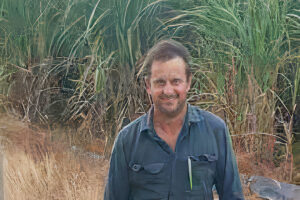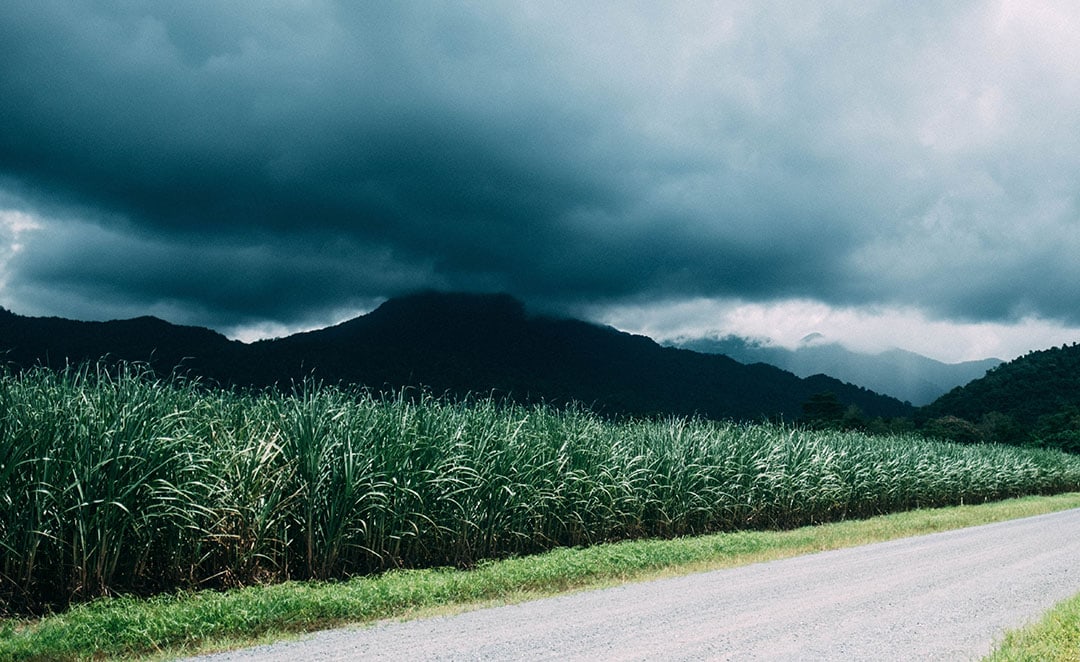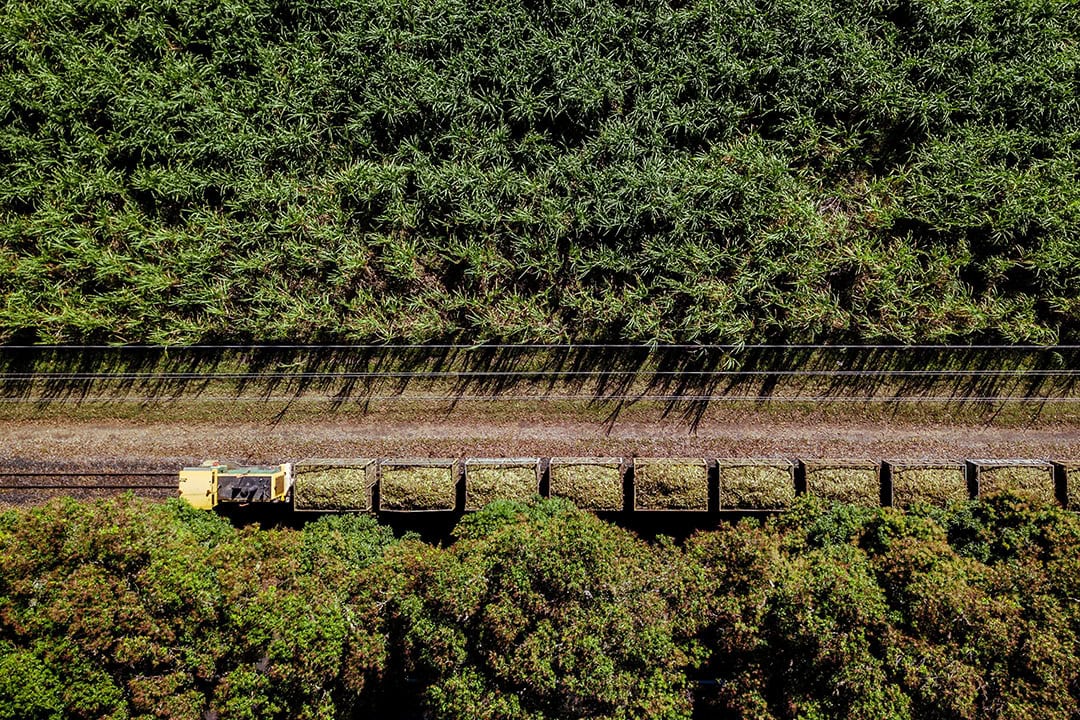Cane farmers near Great Barrier Reef are adopting irrigation automation

Australian cane farmers near the Great Barrier Reef are adopting irrigation automation to arrest rising groundwater and salinity issues, use less water and prevent runoff.
Led by Sugar Research Australia, the Burdekin Irrigation Project (BIP) in Queensland aims to maximise industry profitability through smarter irrigation practices which will also improve environmental outcomes. The Burdekin region of Queensland has 80,000 hectares of land under sugarcane. It typically produces 8,300,000 tonnes of cane annually, farmed by approximately 530 growers on 927 farms.
There has been a rising water table in the Burdekin region near the Great Barrier Reef, trapping salts closer to the surface and creating a salinity problem for farmers and the environment. Installing precision irrigation systems, reduces the amount of water that farmers are using, reduces energy and also reduces runoff coming off the farm.
Improved irrigation

Due to excess runoff from low efficiency furrow irrigation systems, the region has been identified as a priority catchment for nitrogen (N) and pesticide loads entering the Great Barrier Reef lagoon. Research shows it is possible to reduce N losses through improved irrigation with no impact to yields.
Burdekin canefarmer Steve Pilla has a 150-hectare farm in the Burdekin, Australia’s largest sugar-growing region. Thanks to good access to groundwater, cane has been grown there right alongside the Great Barrier Reef since 1875. Mr Pilla had a farmhand to help him with daily operations but finding reliable labour and covering the cost of that labour got harder.
Planning a whole irrigation sequence
Before he joined the Burdekin Irrigation Project (BIP), irrigation was too often run on the side. Mr Pilla concentrated on getting other time-critical farm-work completed. He understood that automation would take some of the repetitive irrigation work out of his daily schedule, and help him reduce water and energy costs, while improving productivity. He was also hoping to automate the change of irrigation sets at night and on weekends.
Now that his irrigation system is automated, Mr Pilla can plan a whole irrigation sequence in advance, whenever he has spare time. He chooses the pumps that are needed to supply the water and the sets he wants to irrigate in his new sequence.
I no longer need to check the irrigation daily, and that has saved me valuable time
Mr Pilla uses IrrigWeb, a sugarcane irrigation scheduling tool for the sugar industry. It provides irrigators with current and local advice on sugarcane crop water use and development. The tool combines crop water use estimates with user-defined irrigation system constraints and crop cycle inputs to schedule future irrigation events.
Farmers select the closest meteorological site as the source of weather data inputs. Users can define multiple fields to either represent actual blocks on the farm, or generic fields to represent a range of cropping cycles throughout the season.
Text continues below picture

Keeping a close eye on things
Fields are assigned a soil type from a list of well documented soil profiles, found locally in the region. Soil profile inputs define the soil’s water holding capacity and concepts such as drainage rates and runoff. Irrigation inputs can either be manually captured for a field, or automatically calculated using IrrigWeb’s Auto-Irrigate function.
Output is provided by a range of graphical and tabular reports. Charts depicting the soil water balance, canopy development, water stress, crop water use and yield components are combined with tabular irrigation schedules and historical reporting.
Irrigweb records the applied irrigation and then starts the calculation process for the next irrigation
Irrigweb tells Mr Pilla when it is time to irrigate. A base station sends radio signals to the equipment on farm, so the pre-planned irrigation event can be executed. Integrated safety features like pressure sensors make sure that either an alarm is sent to Mr Pilla, or the system is immediately shut down if any hardware fails and system pressure goes beyond pre-set limits.
Constantly monitoring the situation
When he used the system for the first time, Mr Pilla went out to check in the paddock that everything went to plan. But he soon realised that his automation system was keeping a close eye on things, better than he could. It constantly monitors the situation, and can shut down the system or send alarms to Steve.
Irrigweb records the applied irrigation and then starts the calculation process for the next irrigation. Once a week, Mr Pilla receives an automated IrrigWeb email with a list of the sets that will require irrigation over the next seven days, so he can set up irrigation sequences accordingly. Set durations are optimised using end of row sensors to minimise tailwater loss.
Text continues below picture

Minimising deep drainage losses
The planning process is done at a convenient time by Mr Pilla or his daughter, while the automation system executes the commands when the crop needs irrigation. With this new approach, irrigation tasks are no longer constantly interfering with daily routines.
Mr Pilla is currently also hosting a BIP demonstration site, wanting to understand how he could improve his practices and share the knowledge gained in the process. Replicated strip trials were set up on his farm to demonstrate differences between irrigation volumes and scheduling.
Economic outcomes
Measurement of irrigation volumes, irrigation progress, runoff loss and soakage are measured by smart tools including advance sensors, tensiometers, and flumes. The data is then analysed by the BIP team. The economic outcomes of different irrigation treatments will be evaluated at the end of the project.
Mr Pilla hopes to learn how to minimise deep drainage losses. He has had to install subsoil drainage in the past to combat wet spots caused by shallow localised groundwater tables. One of his blocks was partially deep ripped a decade ago, and ever since has a history of excessive deep drainage losses. This localised problem could possibly be lessened with higher inflow and shorter duration irrigation events.
Saved valuable time
With the use of automation, these shorter irrigation durations with higher flows do not upset the daily farm routine. And water is no longer draining through a leaky profile, and adding to rising groundwater tables.
Mr Pilla’s daughter has been able to help on the farm while not being physically present. She has just finished her Bachelor of Business and is working off farm. She has the flexibility to plan and set up whole irrigation sequences online, at a time to suit her. As a result, she is able to become part of the farming team, working from all locations. Steve is able to respond on farm, if alerts flag something that needs attention.
After using the new irrigation system for a couple of months, and overcoming initial teething issues, Mr Pilla now has confidence that the system is functioning properly. “We included pressure sensors as safeguards, just in case”, he says. “I trust that it all works, and if there is an issue, I will receive an alert on my phone. I no longer need to check the irrigation daily, and that has saved me valuable time.”
Join 17,000+ subscribers
Subscribe to our newsletter to stay updated about all the need-to-know content in the agricultural sector, two times a week.



